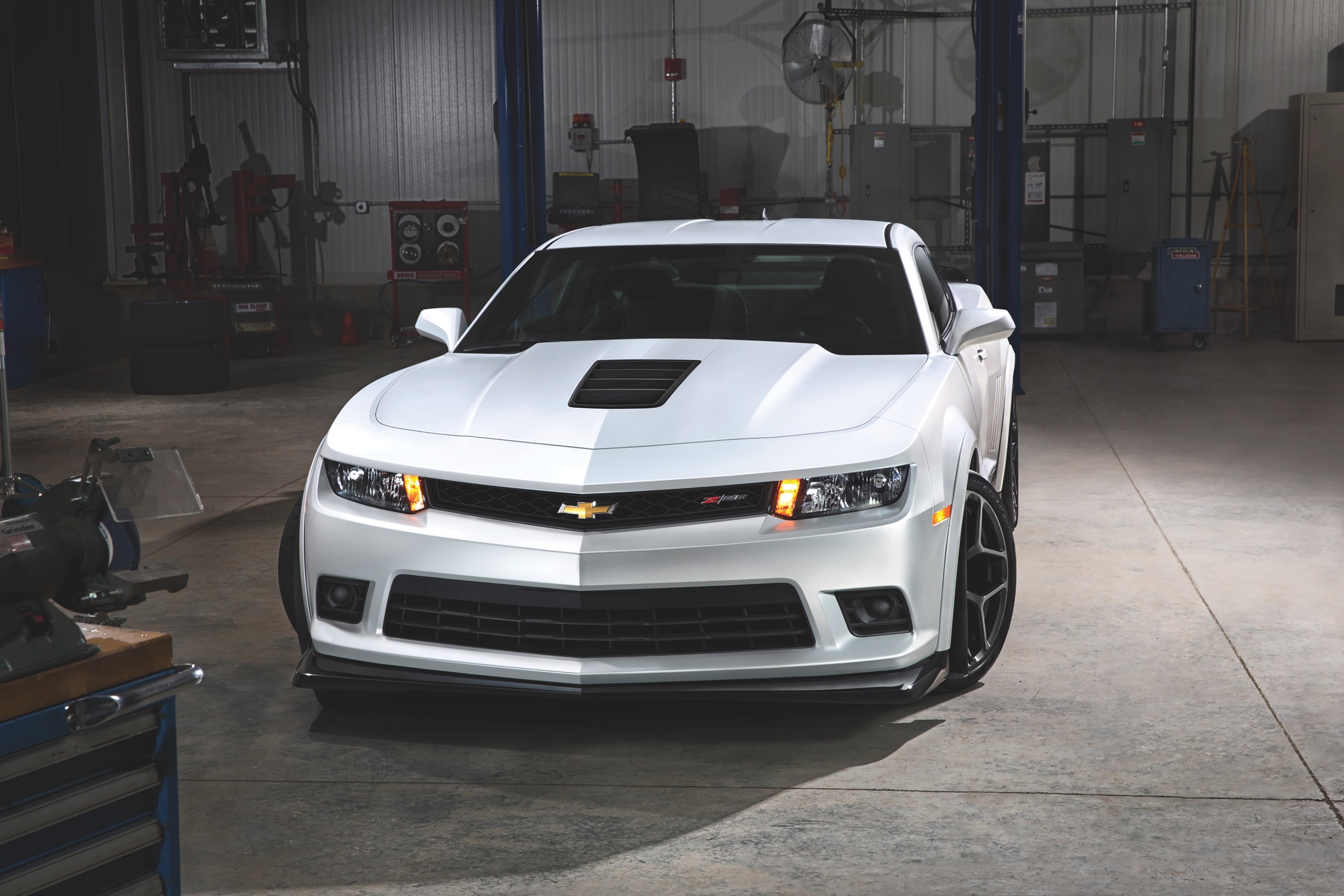
This Camaro may have a historic name, but there’s nothing nostalgic about it. This is the fastest and most focused Chevy pony car in the history of the model. Forget the Z/28 of your youth because this Camaro isn’t for show. It’s not the best stoplight racer, either.
No, this Camaro has been optimized, modified, tweaked and transformed into a remarkable track car that belies both its size and weight. It’s down 75 horsepower on the previous big dog Camaro, the ZL1, it’s lighter by 136 kg (300 lb). All of these changes have been made solely for the purpose of making this Camaro embarrass Porsches – and perhaps some Corvettes – around a racing circuit.
The lighter weight comes from ruthless parts development and selection. Most of the Z/28-specific components are lighter by design. Forged wheels and track-specific tires, removing the air conditioning system, a lightweight rear seat, less sound deadening, a trick suspension package, thinner rear glass, no floor mats and no trim inside the trunk make this fifth generation Camaro the lightest yet.
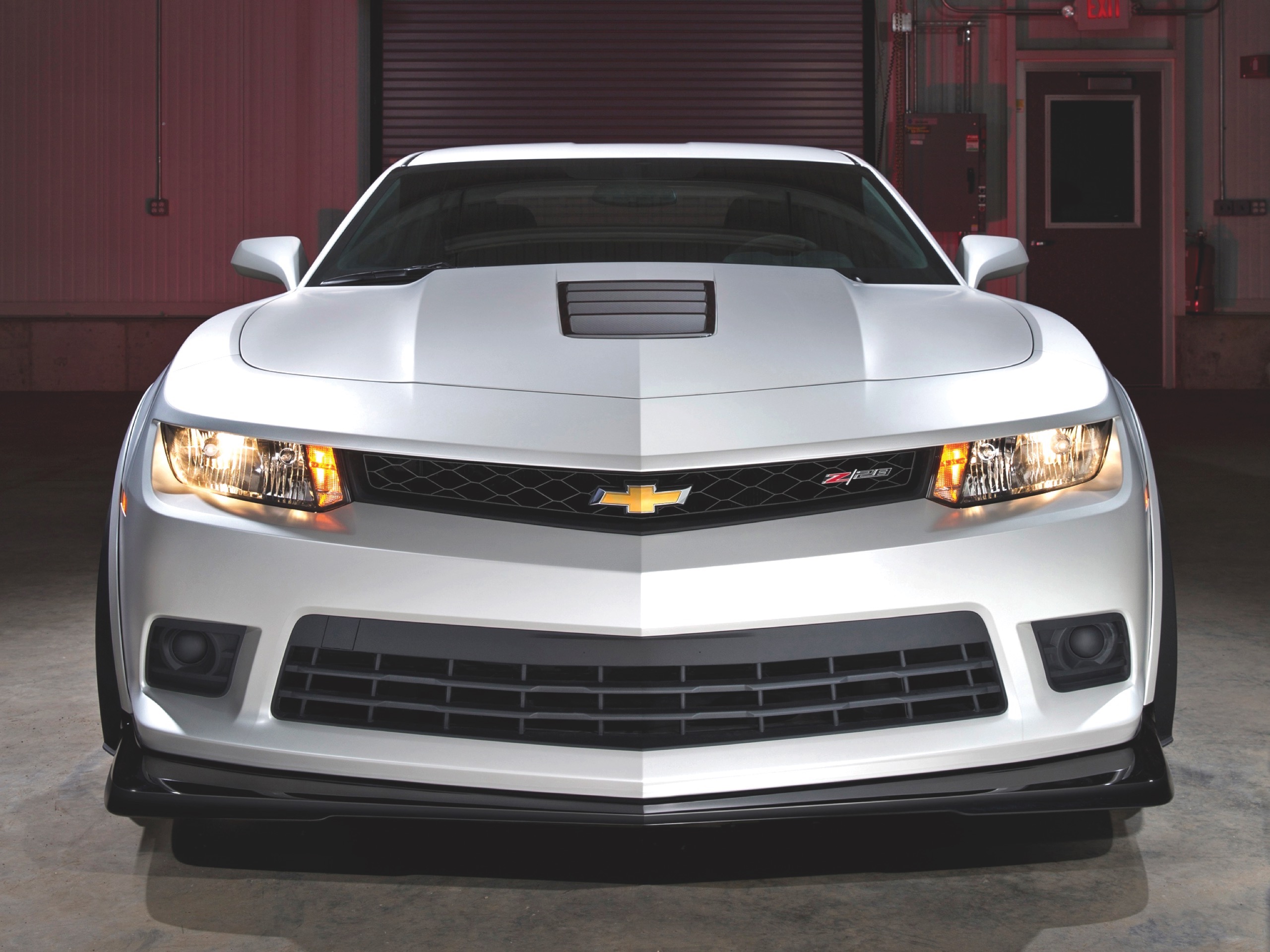
Chevrolet was so focused on making this the fastest Camaro that development was undertaken at the renowned Nürburgring Nordschleife circuit in Germany. There are a number of reasons manufacturers test cars at this circuit and, among them, are the great variety of corners, surface changes and weather conditions during one 20 km lap. Another byproduct is, of course, claiming some bragging rights by setting an unofficial lap time. The Z/28’s time of 7:37.4 places it four seconds ahead of the Camaro ZL1, and also faster than some of the best Europeans, like the current Porsche 911 Carrera S and Ferrari 458 Italia.
The tricks needed to optimize this Camaro aren’t endless, but development was ruthless. GM’s 7.0-litre dry sump LS7 V8 was undoubtedly chosen for its power and free-revving characteristics. The glorious small block sound it makes is a nice side effect. There is only one transmission available: a close ratio, six-speed manual from Tremec with a short throw shifter. Power gets to the ground through a Torsen helical limited-slip differential.
Brakes are massive, modern carbon ceramics supplied by Brembo, and measure a remarkable 394 mm and 390 mm in the front and rear, respectively, with six-piston front and four-piston rear calipers. To say the Z/28 has more than enough brake is
an understatement.
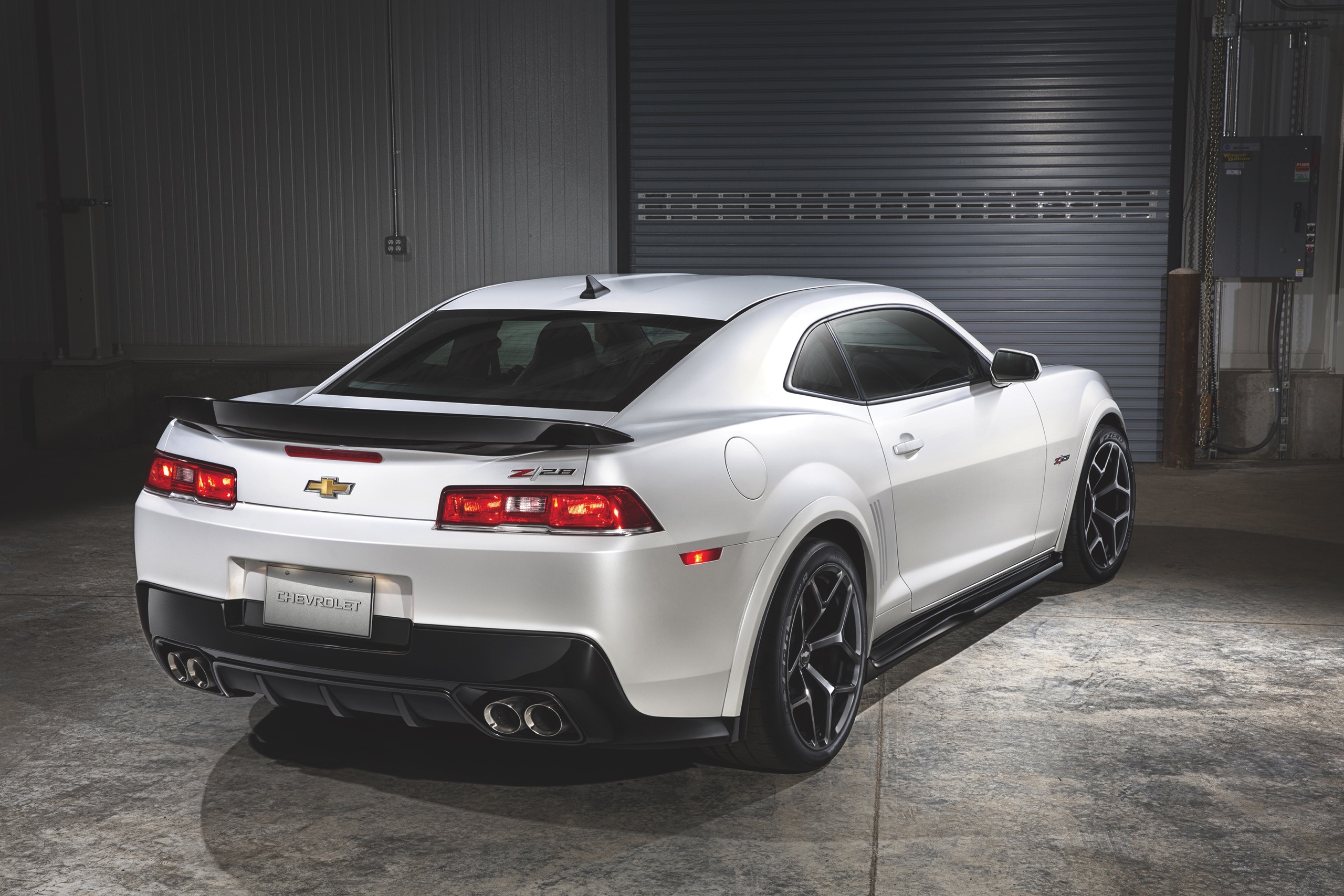
If you have a sharp eye, you’ll notice the slightly undersized 19-inch wheels but, like everything else on the Z/28, they were chosen specifically for this car. They’re forged for strength and light weight, but also permit the fitment of one of the car’s secrets of success, the Pirelli Trofeo R tires. These are track-compound specials from the same famous tire company that supplies the Formula One grid, and the Z/28 uses 305/30ZR19 size tires in all four positions.
My experience with the Trofeo R tires has only been with massively-tuned exotics and I’ve always found them to be a remarkable tire, particularly when they have to deal with the power and cornering capabilities of Ferraris and Porsches. With the Z/28, this is the first time the Pirelli Trofeo R has been fitted as original equipment.
Front spring rates are up 85% and 65% in the rear, with stiffer bushings throughout the suspension as well as marginally smaller anti roll bars, all of which are tuned to work with the highly advanced dampers chosen for the Z/28. Where the ZL1 makes use of GM’s Magnetic Ride damping, the Z/28 demanded something more track-focused and Markham, Ontario’s Multimatic was called up to develop a set of their DSSV spool-valve dampers for this Camaro. 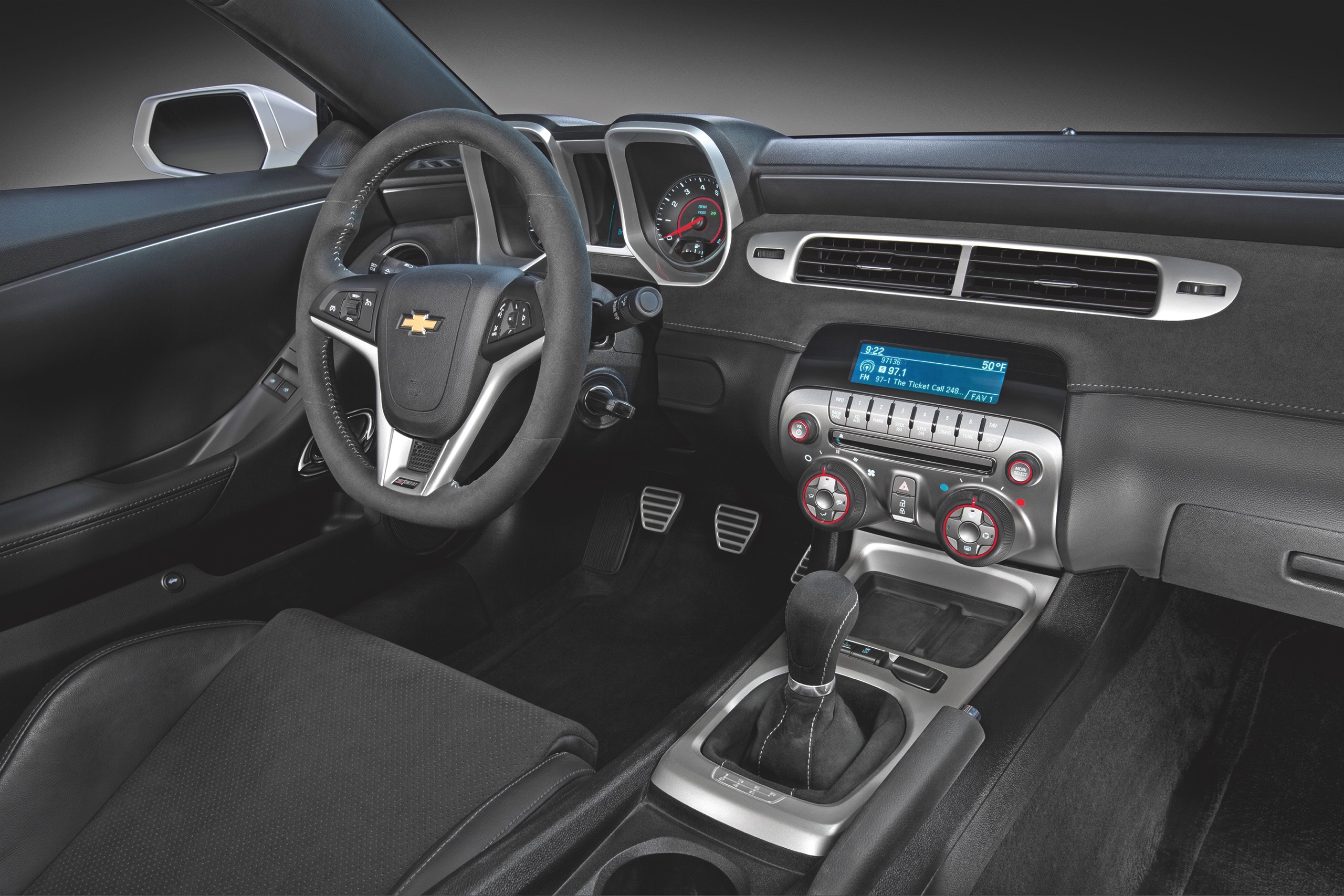 These dampers are the key to ensuring the meaty Pirellis stay in contact with the road and this innovative technology is so remarkable that Multimatic dampers are used by many F1 teams, including current World Champions Infiniti Red Bull Racing. The DSSV dampers are entirely unconventional and require a better explanation, so we asked Multimatic’s Engineering Vice President Larry Holt for a breakdown.
These dampers are the key to ensuring the meaty Pirellis stay in contact with the road and this innovative technology is so remarkable that Multimatic dampers are used by many F1 teams, including current World Champions Infiniti Red Bull Racing. The DSSV dampers are entirely unconventional and require a better explanation, so we asked Multimatic’s Engineering Vice President Larry Holt for a breakdown.
“Everywhere in the world, truly, in every single application whether it’s a backhoe or a bulldozer, a skid-steer or an airplane – the hydraulic proportional flow control in that device is controlled by a spool valve. Every single one of them; no exceptions. It turns out the only proportional flow control device in the world in industry that isn’t controlled by that, or hasn’t been, is
a shock absorber.”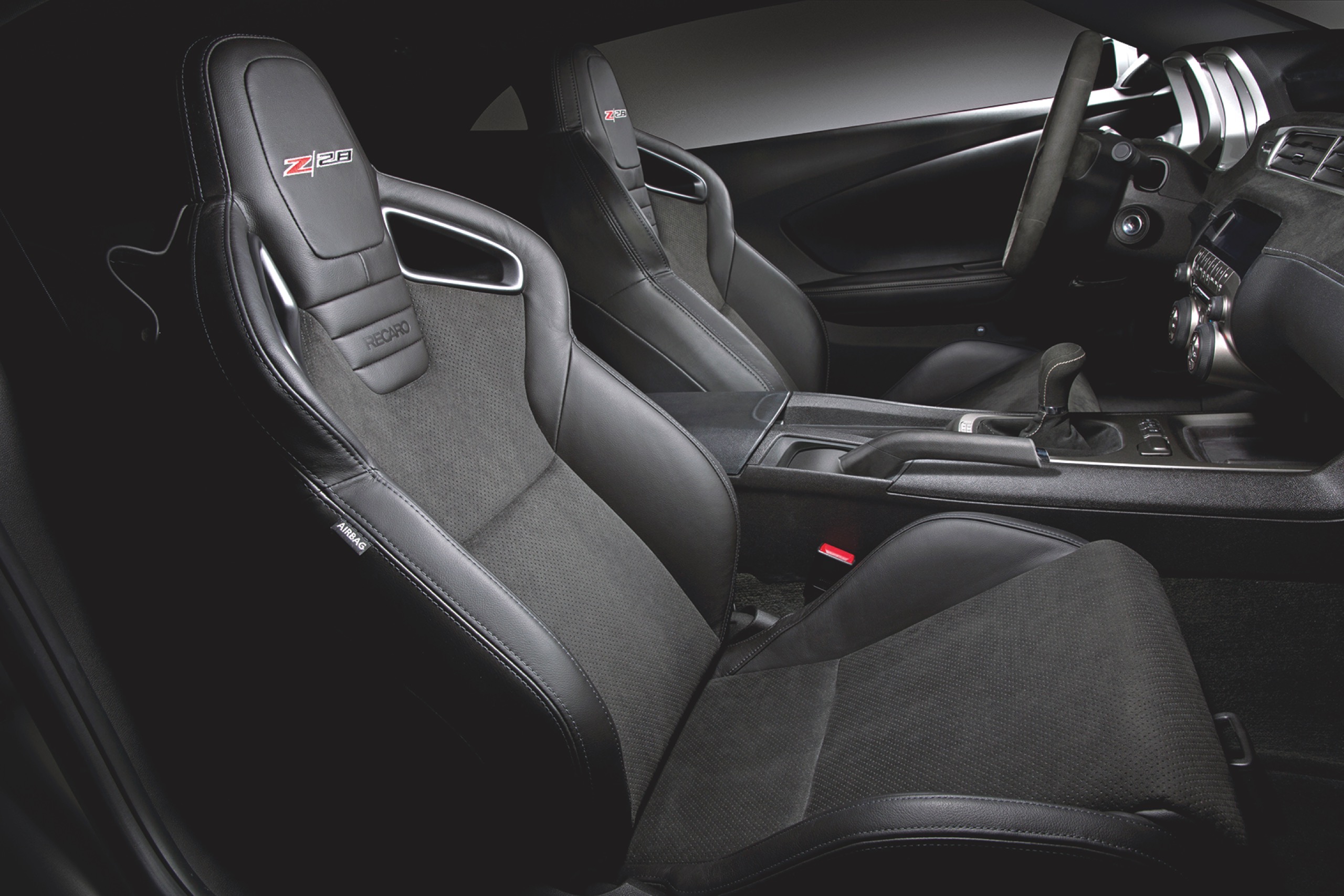 “In the past, that’s all been done with all these shims being shaped in a funny way, and you screw them down and you put preload on them. A clever guy puts them on the dyno and he screws around with it, and that’s how he gets it. Then you hope that as you’re building a lot of them, it’s consistent, but it’s difficult.”
“In the past, that’s all been done with all these shims being shaped in a funny way, and you screw them down and you put preload on them. A clever guy puts them on the dyno and he screws around with it, and that’s how he gets it. Then you hope that as you’re building a lot of them, it’s consistent, but it’s difficult.”
“With a shim damper, you could guarantee 10 to 12% variance damper to damper. Our road car dampers in the Z28 are within 2%. We build the Infiniti Red Bull dampers and those are within 1% tolerance, damper-to-damper, car-to-car because that’s what they need to have. Z/28 gives you 2% tolerance, which would be the world’s greatest capability as far as precision of damping.”
In addition to being exceptionally precise and giving the Z/28 superb wheel control, the DSSV dampers offer the right byproduct – they’re lighter than Magnetic Ride.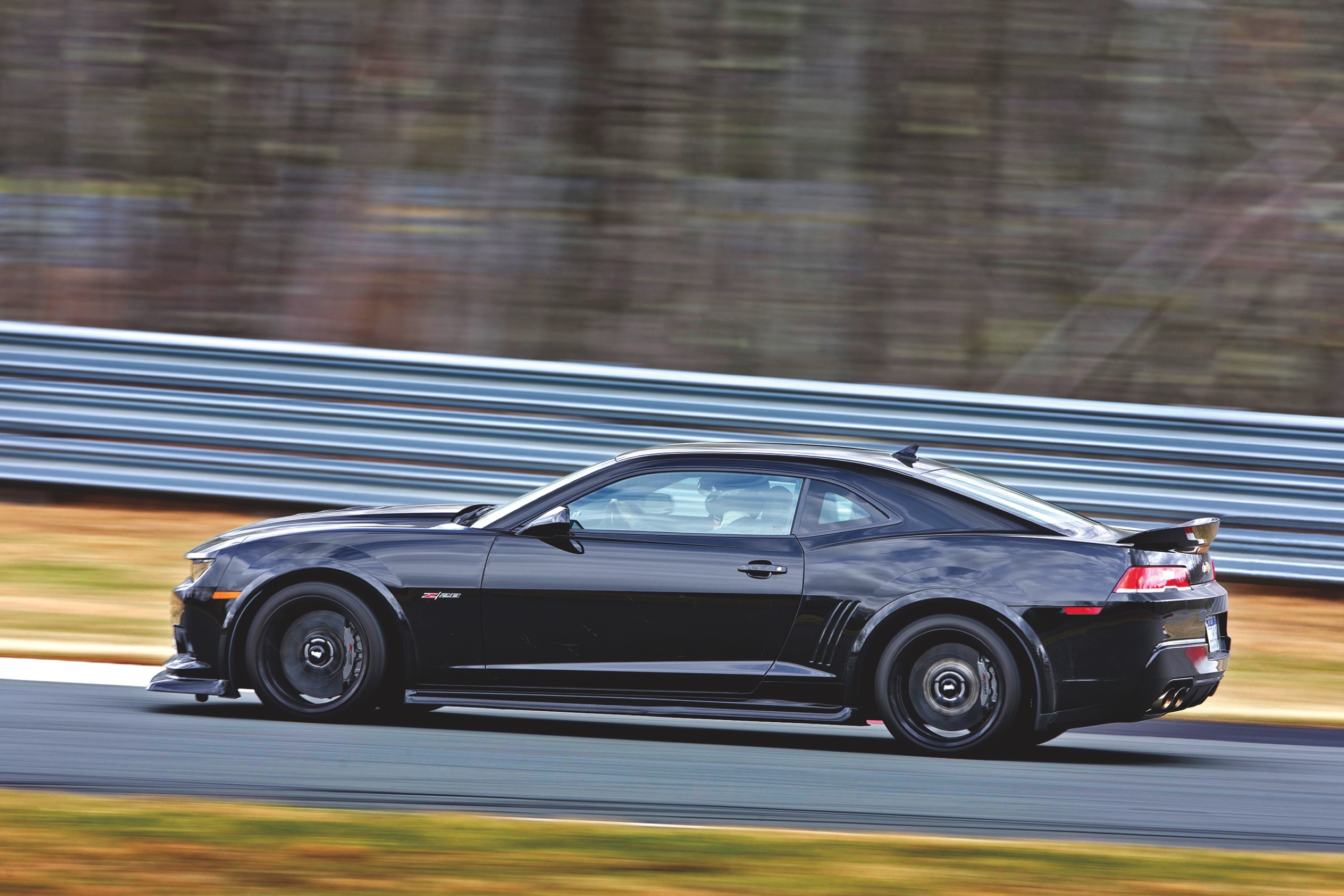 Outside, the Z/28 has obvious aerodynamic differences from other Camaro models, and these changes are solely for optimizing aero performance. There’s a new large front splitter, taller rear spoiler, fender lips, rocker panels, fender liners and belly pan that serve to both decrease drag and increase downforce. The traditional Chevrolet bow tie on the grille has been replaced by what they call the “Flowtie.” It’s the same bow tie see on every Chevrolet, but with the gold centre section removed, and that void improves airflow for a demonstrable improvement in engine cooling. It’s another little trick the engineers found for better performance – and it’s a Z/28 exclusive.
Outside, the Z/28 has obvious aerodynamic differences from other Camaro models, and these changes are solely for optimizing aero performance. There’s a new large front splitter, taller rear spoiler, fender lips, rocker panels, fender liners and belly pan that serve to both decrease drag and increase downforce. The traditional Chevrolet bow tie on the grille has been replaced by what they call the “Flowtie.” It’s the same bow tie see on every Chevrolet, but with the gold centre section removed, and that void improves airflow for a demonstrable improvement in engine cooling. It’s another little trick the engineers found for better performance – and it’s a Z/28 exclusive.
Save for the lack of floor mats and a lighter rear seat assembly, the interior is familiar Camaro, though optimized for track purposes. The Recaro seats are comfortable and, more importantly, keep the driver in place with aggressive side bolsters. Although they’re American XL-sized, these are some of the best original equipment seats available. The steering wheel and shift knob are finished in Alcantara, perfect for a track-specific car.
The seating position – or perhaps, the driver interface – is refreshingly straightforward, and the wheel, shifter and pedals are in the ideal locations. Pedals are laid out perfectly for heel-and-toe shifting and there is nothing more rewarding – on track or in life – than executing a perfect downshift with that thunderous LS7 under the hood.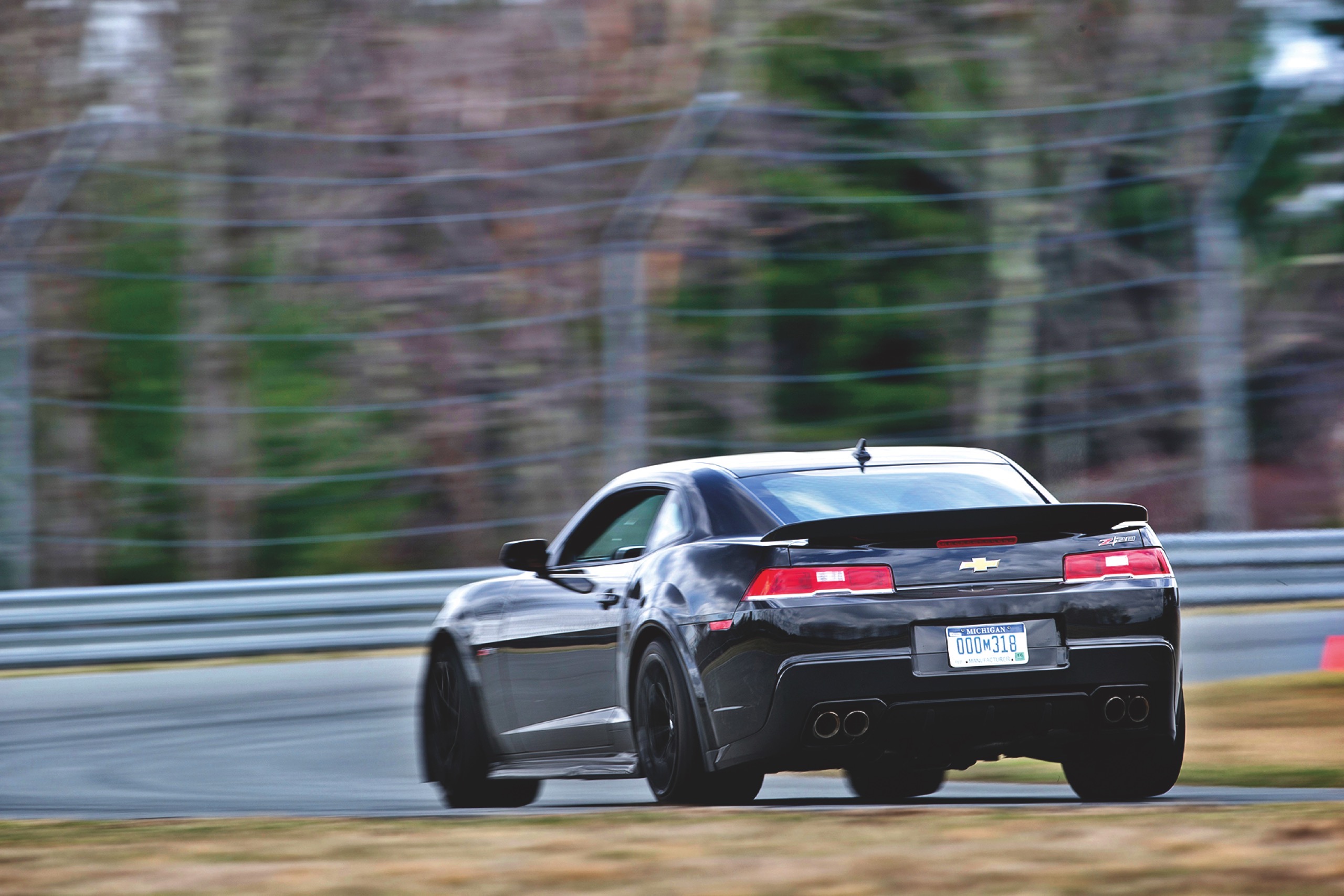 Hustling the Z/28 around a circuit, it becomes quickly apparent that it is one of the most approachable track cars of the last few years. The chassis is remarkably controlled, undoubtedly due to the DSSV dampers and grip levels are exceptionally high thanks to the Pirelli track tires. This big pony car turns in and responds to corner corrections with an immediacy previously unknown to the Camaro, and it never feels like it weighs over 1,724 kg (3,800 lb).
Hustling the Z/28 around a circuit, it becomes quickly apparent that it is one of the most approachable track cars of the last few years. The chassis is remarkably controlled, undoubtedly due to the DSSV dampers and grip levels are exceptionally high thanks to the Pirelli track tires. This big pony car turns in and responds to corner corrections with an immediacy previously unknown to the Camaro, and it never feels like it weighs over 1,724 kg (3,800 lb).
Carbon ceramic brakes have, until recently, been reserved for the likes of Aston Martins and Ferraris for their remarkable performance and exceptionally lightweight, but they come at a price. Solely for performance and a cost-be-damned approach, the Z/28 demanded carbon ceramics to both keep the weight down and give the car uncompromising braking performance. After repeated hard laps, the Z/28’s brake response and feel remain unchanged. This Camaro brakes so well that it’s almost incomprehensible.
While it’s not a car for everyone, the Z/28 is a car for those of us who enjoy banging out laps around racing circuits. What’s more, it’s a car that’s easy to drive all the way up to its limits. It’s quite a bit more approachable than a SRT Viper TA or Porsche 911 GT3.
If you want a car that will get you around a circuit faster than the Europeans for far fewer dollars, get yourself a Z/28. Since it’s only produced in small numbers, you had better get yours now.






















